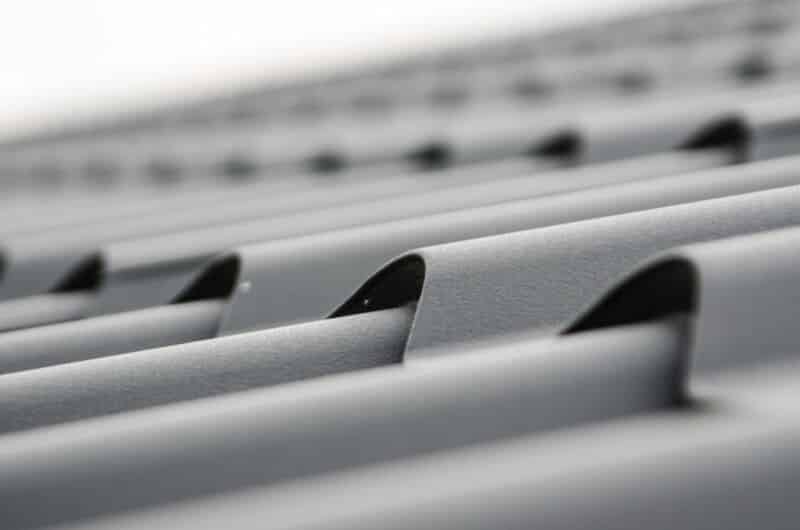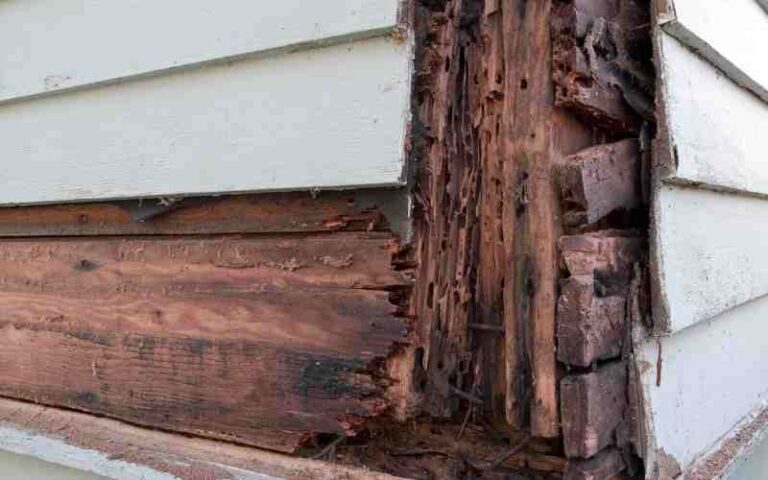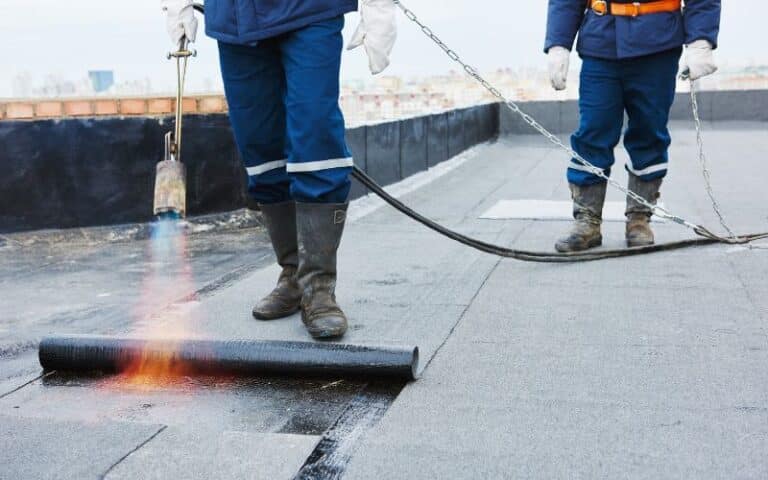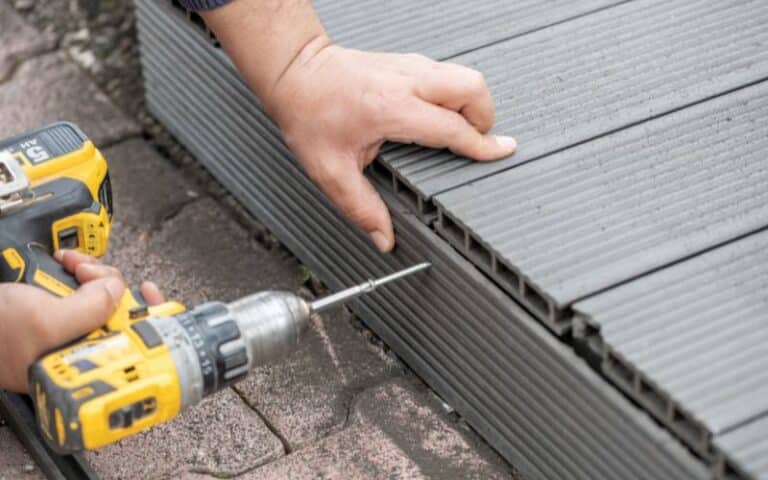A timely roof inspection does not only detect roofing problems but also helps homeowners to prioritize areas for improvement or renovation.
You should schedule an inspection immediately if you notice any damage to the metal roof caused by strong winds, a storm, or any other factor.
You can perform a metal roof inspection of a house or a commercial building yourself as well. Looking at your metal roof from the ground will only tell you a little about its conditions, such as if there are any divots or other apparent abnormalities present on the roof.
For a deeper and more detailed inspection, though, you will need to inspect it carefully and thoroughly.
It is crucial to arrange for routine metal roof inspections apart from a potential storm or intense wind damage as well.
There is immense benefit in scheduling a regular roof inspection but make sure to keep in mind that it should be a ‘certified’ metal roof inspection.
This will help you in managing proper maintenance and also understand the condition of the roof.
A professional roof inspector will not only detect any faults in your metal roof layout and recommend ways to repair them in a cost-effective manner before the whole situation escalates.
Some of the reasons for timely metal roof inspections include harsh weather or storm damage, leakages, improper drainage, vegetation damage, rust, etc.
Whether you are selling a house or buying one, a certified roof inspection can provide you or a prospective buyer with peace of mind by assuring them that the roof is in a top-notch shape and would not require a replacement or high repair costs time and again.
Several factors are analyzed during a metal roof inspection.
A certified roof inspection involves a licensed roof inspector who certifies that a roof does not have any defects and in the likelihood that no unexpected damages happen to it, it will not require replacing or repairing for a determined period, say, 1, 2, or 5 years.
In this article, we will look at the answer to the question, ‘what is a metal roof inspection?’ and a few of its related factors.
Ready for a Roofing Quiz?
What is a Metal Roof Inspection?

A metal roof inspection is simply a roof inspection but of a metal roof. It is pretty different than a typical folded or overlapped roof inspection.
It is a rigorous assessment of the complete metal roofing system of a house. Usually, it has to be carried out regularly for the proper safety of the residents. Also, it is carried out for insurance purposes.
The on-site services are usually relatively short and may not take more than an hour or two. In some cases, the insurance company might require a certified metal roof inspection if they believe that it might soon need replacing.
Who Will Inspect a Metal Roof?
The inspector for metal roof inspection must be competent and skilled as well as have knowledge about metal roofs.
A licensed home or roof inspector physically analyzes the roof of a house and records their findings and critical information about the roof, such as its age, permitting information, replacement or repair evidence, etc.
A certified roof inspection also identifies the expected lifespan of the roof. The report indicates any leaks or damages on the roof and the current condition of all of its components.
What Is An Assessment Report?
The metal roof inspection report contains pictures of the surface, edges, or the attic, as well as evidence for repairs if any. Depending on the number of images and details of the roof, the report usually is 3 to 4 pages long.
For a home roof inspection, it is necessary to understand that there are different types of roofs with varying types of materials. The inspector must be familiar with common issues in the material and the ways to assess them.
Inspection of metal roof systems regularly leads to the detection of any roof problems before they may cause damage and also maintains safe environments for the occupants.
Useful Tools and Gears for A Metal Roof Inspection
Here are several tools and gears that are either essential for a metal roof inspection or make the process easier:
- – Moisture meter
- – Magnetic pickup tool
- – Laser distance measurer
- – Utility knife
- – Roof snake
- – Vertical lifeline assembly
- – Ladder
- – Pitch and slope locator
- – Hiking shoes or professional roof grippers
- – Safety helmet ball cap
- – Thermal imaging camera
- – Cobra nozzle
Inspecting a Metal Roof
Metal roofs can deteriorate from extreme weather conditions such as snow loads, wind storms, or heavy rainfall, any movements such as material contraction or expansion, earthquakes, and construction faults or lack of maintenance.
If a metal roof inspection is not carried out frequently and the identified problems are not dealt with, the life of the roof might get significantly shortened.
If the metal roof is flat, fungi, mold, and organic matter are a few common and persistent problems. Not only can they cause issues related to health, but they compromise the structural foundation of the house as well.
This is exceedingly uncommon in moist areas as metal often rots in these conditions.
The main elements you need to look for during a metal roof inspection are:
- – General roof and ceiling conditions. Check for wear and tear and debris on the roof, etc.
- – Structural deformation
- – Any signs of water penetration and the damage it caused
- – Any damaged or blocked gutters
- – Over-tightened and under-tightened fasteners
- – Seams with rust or moisture
- – False penetrations
- – Cracking, staining, or leakage in exterior walls
- – Cracking, staining, or holes on interior walls
- – Mold or rust on the roof deck’s interior
- – Dents or cracks on the deck of the roof
- – Fading of color
- – Lap joint discoloration
- – Soft spots on the main panels of the roof
- – Roof’s attachment to the perimeter
- – Deterioration on the edges of the roof
- – Excessive movement in the expansion joints
- – Movement in curb flashings
- – HVAC elements mounted on the roof
The inspection also involves looking for any waste on the roof, the condition, and functioning of the drainage system, deformity in finishing, loft conditions, surface deterioration, and signs of structural damage.
The inspection of in-ceiling conditions includes finding any cracks present or water staining and leakages.
The first thing for assessing the metal roof is to walk each part of the roof, if safe, and look for any leakages, corrosion in panels, breakdowns, deflected panels, moisture problems, and any loosening in fasteners.
The following things need to be considered while inspecting a metal roof:
- – To inspect the roof covering continuity and any signs of damage or deterioration.
- – To check the presence of any water penetration or distress in structure and frost buildup.
- – To maintain a record and report the inspection findings.
The Most Problematic Areas On A Metal Roof
Metal roofs are usually sloped, causing any water to drain out through the gutter system that may be exposed or concealed.
The inspection should involve checking the gutters and drains to ensure they are free of any detritus or blockages such as leaves.
Flashings, perimeters, and panel seams that are deteriorated can cause leakages in several areas of a metal roof that is seam fastened.
On metal roofs that are flat, you should check for the coating conditions. The coating should be free from rust, granular loss, cracks, holes, or surface damage.
In roofs that are sloped, you should check the condition of the roof materials and surface and look for any deformity in edges and corrosion in the metal.
Another issue that should be included in the checklist of a metal roof inspection is the integrity and condition of the metal roof’s fasteners. Sometimes the fasteners are so tightened down that they cause rust.
Usually, panel fasteners have neoprene sealing washers, which can break over time because of contraction and expansion or from long exposure to harmful UV rays.
Therefore, it is always a good idea to give the sealant a touch while walking the roof to check if it is still flexible and soft, the washers are in proper shape, and the fasteners are tightly fastened.
Flashings are made of metal and serve the purpose of redirecting water from the roof. During a roof inspection, it is vital to check for damage to the flashings around the vent pipes, dormers, and chimneys.
Flashings that are corroded or damaged can allow water to seep into the roof’s interior structure, which will deteriorate not only the structure of the roof but the building’s walls as well.
If you find any such damage, you should consider replacing the flashings immediately.
Seams and Their Types
Seams are considered weak points in the roof. Keep in mind that there are different types of seams on other different metal roof systems. Some of them are discussed below:
‘Standing seams‘ are a prevalent roofing choice when it comes to seams in metal roofs. It joins separate panels, which are elevated over the roof.
What it does is that it drains any runoff down the panel and does not allow it to get in contact with the seam.
‘Overlapping seams’ have a gasket or sealant, more often than not, which is placed between the panels. The metal panels that are low-end are typically prone to overlapping.
Another type is known as ‘Flat seams.‘ They are in a vertical shape or look like standing seams and are usually folded by using a machine.
Such seams are considered water-resistant seams as they prevent intrusion of water within the roof.
What are Penetrations in a Metal Roof?
Penetrations are areas on the metal roof to which different objects may be installed, such as an exhaust pipe, any material for house ventilation like chimneys, vents, fascia, drip edges, etc.
During a metal roof inspection, no matter what the type of seam, it should not be damaged, and it has to be capable of preventing moisture penetration.
Metal panels typically do not overlap the penetration flashing’s upper edges as they overlap far less compared to most of the other roof-covering materials.
Any installation that prevents the intrusion of moisture through a sealant will need to be replaced with a new sealant quite often.
The reason behind this is the sealant is prone to cracking, shrinking, and drying with the passage of time.
But again, the application schedule may vary depending on the conditions to which the sealant is exposed, the quality of its application, and the quality of the sealant itself.
A metal roof inspection should always mention the condition of the sealants in the inspection report.
How Often Should You Inspect Your Metal Roof?

To be on the safe side, you should inspect your metal roof twice a year, if not more. Make sure to hire a qualified professional to inspect your roof at least once every two years.
How Much Does A Professional Metal Roof Inspection Cost?
Some commercial and industrial roof evaluations are free of charge if you promise to get the required roof repairs from the same roofing company or contractor.
So it all depends on your satisfaction to request a no-cost, no-obligation evaluation or to find an inspection company that provides some extra benefits related to the inspection.
Through the right roofing techniques and proper maintenance, you can prevent expensive damage to your roof as the environment continues to go through its seasons.
Well, here is the catch!
Whether you notice the symptoms of a damaged or a leaking metal roof or want an opinion about its durability, do not hesitate to call a metal roof specialist to conduct a certified metal roof inspection.
If you are aware of your roof being old and you have never even arranged for a roof inspection, take this as a sign to arrange an obligation-free inspection today!
Stay Safe






